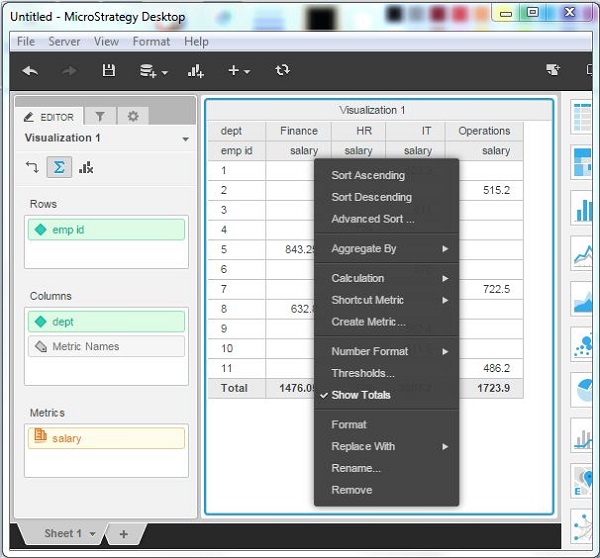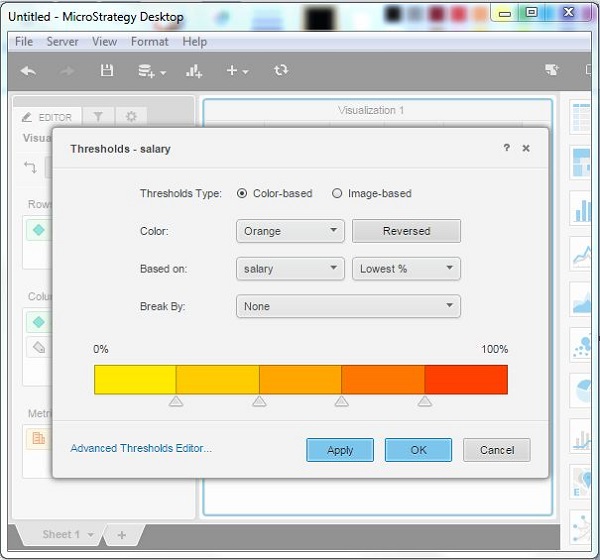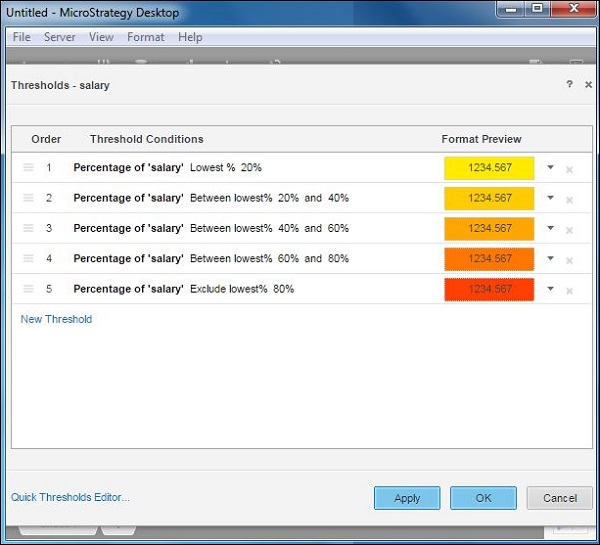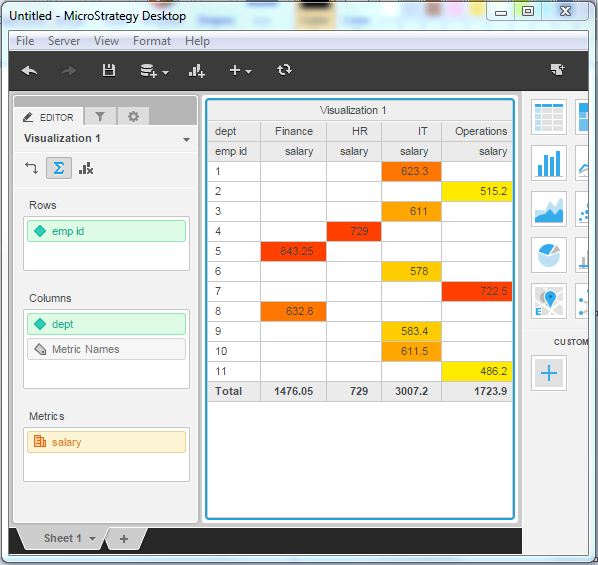
- MicroStrategy - Home
- MicroStrategy - Overview
- MicroStrategy - Environment Setup
- MicroStrategy - Desktop
- MicroStrategy - Architecture
- MicroStrategy - Importing Data
- MicroStrategy - OLAP Services
- Configuration Objects
- MicroStrategy - Public Objects
- MicroStrategy - Schema Objects
- MicroStrategy - Report Objects
- MicroStrategy Basic Reporting
- MicroStrategy - Report Types
- MicroStrategy - Slicing
- MicroStrategy - Dicing
- MicroStrategy - Pivoting
- MicroStrategy - Drilldown
- MicroStrategy - Rollup
- MicroStrategy - Creating Metrics
- MicroStrategy - Nested Metrics
- MicroStrategy Advanced Reporting
- Creating Derived Metrics
- MicroStrategy - Metric Comparison
- MicroStrategy - Creating Filters
- MicroStrategy - Advanced Filters
- Shortcut & Embedded Filters
- MicroStrategy - Refreshing Reports
- MicroStrategy - Intelligent Cubes
- MicroStrategy Dashboards
- Creating a Dashboard
- Formatting a Dashboard
- MicroStrategy - Graph Visualizations
- MicroStrategy - Grid Visualizations
- Heat Map Visualization
- MicroStrategy - N/W Visualization
- Visualization with Multiple Datasets
- Filtering Data in Dashboard
- MicroStrategy - Adding Web Content
- MicroStrategy Office
- Conditional Formatting
- MicroStrategy - Custom Groups
- MicroStrategy - Report Cache Flow
- MicroStrategy - Data Marts
- MicroStrategy - Predictive Models
- MicroStrategy Useful Resources
- MicroStrategy - Quick Guide
- MicroStrategy - Useful Resources
- MicroStrategy - Discussion
MicroStrategy - OLAP Services
Online Analytical Processing (OLAP) is a multidimensional analysis of business data. It provides the capability for complex calculations, trend analysis, etc. MicroStrategys OLAP Services is an expansion of MicroStrategy Intelligence Server. It uses the concept of Inmemory Business Intelligence. This helps the BI platform to extensively improve the performance and analysis.
The various OLAP manipulations on the report uses features such as aliasing, banding, sorting, pivoting, page-by, and so on. These features do not cause the report to be reexecuted against the warehouse, and therefore have a much faster response time. Following is a brief description of various OLAP features available in MicroStrategy Desktop.
Aliasing − This feature is used to rename any object on the report grid, such as attribute names, consolidation names, custom group names, and metric names.
Banding − Used to color groups of rows or columns so that they form bands of data that are easy to locate and analyze.
Page-by − It is a way to segment data in a grid report by placing available attributes, consolidations, or metrics on a third axis called the Page axis.
Pivoting − Used to rearrange the columns and rows in a report to view data from different perspectives such as moving an object from the row header to the column header and vice versa.
Sorting − MicroStrategy Desktop offers quick sort, advanced sort, and hierarchical sort of row or columns.
Subtotals − It is used to add, remove, and edit the subtotals at different levels for metrics on the report.
Thresholds − A threshold highlights data that meets conditions defined by the user.
Following is an example of applying thresholds.
Consider the Employee report created in the previous chapter using an excel file. In the report, we will apply threshold colors to various salaries using the following steps.
Select Threshold Column
In the employee report, click the salary column and choose the threshold from the drop down.

Apply Threshold Option
The next window provides options to choose the type of threshold. We choose the color based threshold with default colors and values.

In case we want to explore other non-default threshold options, we can click the Advanced Threshold Editor, which shows the following additional options.

Threshold Result
The final result of the threshold is shown in the following image which highlights the different salary values as per the threshold color chosen.
